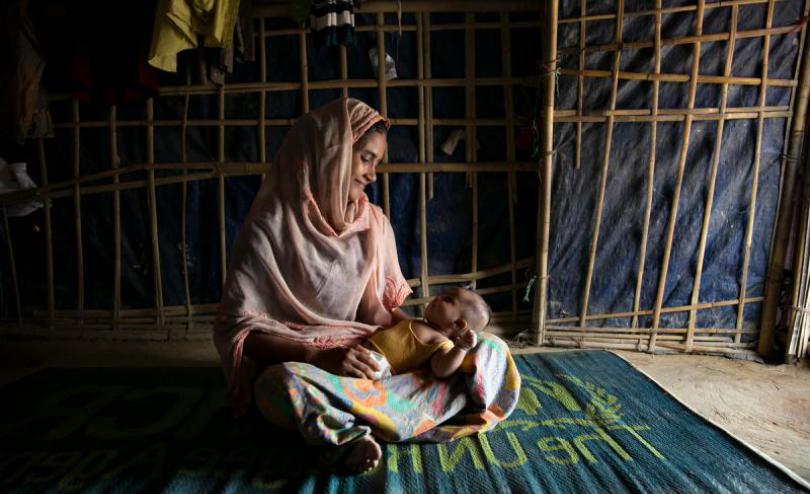BANGLADESH: 51 per cent increase in “unnecessary” C-sections in two years

Massive boom in caesareans is costing patients $483 million per year while the most vulnerable mothers are losing out
JUNE 21, Dhaka, Bangladesh – Bangladesh is facing a massive boom in the number of medically unnecessary C-sections - between 2016 and 2018 the number of operations increased by 51 per cent, new figures released by Save the Children reveal. The country saw an estimated 860,000 of these unnecessary operations last year, while up to 300,000[i] women who need a C-section are unable to afford or access it.
The findings highlight the extent of Bangladesh’s burgeoning C-section problems, where the country’s wealthy are turning to caesareans in record numbers, even though unnecessary C-sections place mother and baby at a needless risk.
Key findings of the analysis include:
- In 2018 Bangladeshi parents paid $483[ii] million in out-of-pocket expenses for C-sections that were medically unnecessary. That’s an average cost of $612 per case.
- 77 per cent of all C-section operations—or an estimated 860,000 procedures in 2018—were medically unnecessary, up from 570,000 in 2016.
- At the same time, up to 300,000 women who desperately need a C-section every year are unable to get one.
- Between 2004 and 2016 the C-section rate in Bangladesh increased from 4 per cent to 31 per cent.
Save the Children is calling for better regulation of the industry, more checks and balances on doctors who carry out the procedure and greater funding for vital maternal health services.
Dr Ishtiaq Mannan, Deputy Country Director of Save the Children in Bangladesh and an expert in newborn and maternal health, said:
“This surge in popularity has created a situation where we have more and more affluent mothers lining up for unnecessary C-sections, under the belief that it’ll be more comfortable or because they’ve been misled by their doctor, while poorer women who desperately need the operation can’t access it. It’s simply astonishing.”
About 80 percent of all births in private hospitals in Bangladesh are now C-sections. This is in part due to poor regulation of the medical sector and some unscrupulous practitioners, for whom doing C-sections is a profitable business.
Dr Mannan continued:
“Doctors and medical facilities are financially incentivized to deliver babies surgically rather than naturally, and face few repercussions if they provide misleading or incorrect advice.
“Unnecessary C-sections put mothers and babies at needless risk, increasing the likelihood of infection, excessive bleeding, organ damage and blood clots as well as ensuring a significantly longer recovery time for the mother. It also takes away the benefits of a natural birth, which enables newborns to receive a dose of good bacteria that’s believed to boost their immune system when they travel through the birth canal, and enables a mother and her baby to have physical contact earlier and breastfeeding to begin sooner.”
One of the biggest challenges is addressing a major shortage of accredited midwives in Bangladesh, who not only support natural child birth when healthy to do so, but help reduce the burden faced by busy doctors. Across the country there are just 2,500 midwives, barely a tenth of the 22,000 recommended by a recent health sector review.
Save the Children supports a midwife training program in partnership with the UN Population Fund to help address this shortage.
Dr Mannan continued:
“It’s important that all women, regardless of their income, location or status in society, have access to the right information and services and can make informed decisions about how they choose to give birth. Increasing the number of midwives in Bangladesh is a big part of this. And if a C-section is medically required, all women must be able to have one, not just those who can afford it.”
Many other countries have experienced caesarean booms too, including Thailand, Sri Lanka and the United States. Where Bangladesh differs is that its boom has not corresponded with a matching reduction in maternal deaths as it should.
ENDS
NOTES TO EDITORS
- Save the Children has been working in Bangladesh since 1970, running programs in education, health and child protection as well as responding to humanitarian emergencies including floods, typhoons and displacement.
- Together with partners Save the Children launched the Stop Unnecessary Cesarean Section campaign. We are working to turn the tide to improve access to quality health care in Bangladesh while reducing the number of unnecessary C-sections. This initiative is creating a collaborative platform to raise voices, build awareness, influence policy. The campaign is also trying to strengthen the health system through advocacy and promotional activities, and change policies from the root level.
- The World Health Organization recommends a C-section rate of between 10% and 15% of all births per country. Since the current C-section rate in Bangladesh is 31%, a minimum excess (unnecessary C-sections) of 8% exists if we use the conservative end (15%) of the WHO range.
[i] Currently 53% of women in Bangladesh deliver at home, according to Bangladesh Maternal Mortality Survey 2016 2016. If all women delivered at a health facility or had full access to Emergency Obstetric Care (EmOC), certain proportion of these women would require life-saving C-sections. 7% of all births in Bangladesh’s hospitals and health centres are necessary C-sections. But the World Health Organization says the number who need C-sections is actually between 10% and 15%. Therefore, it can be assumed that the remaining 3% to 8% of women who need C-sections are unable to get one. This means that between 109,673 and 292,460 pregnant women who NEED a C-Section are unable to have one because (a) they deliver at home and, (b) they have limited access to EmOC services.
[ii] The direct costs of all C-sections are calculated at 499.08 million US dollar, the indirect costs are 127.8 million dollar, totalling 626.89 million dollar. Given the fact that 77.1 percent of all C-Sections are unnecessary, expenses for C-sections that were medically unnecessary are 483.15 million dollars.




